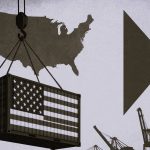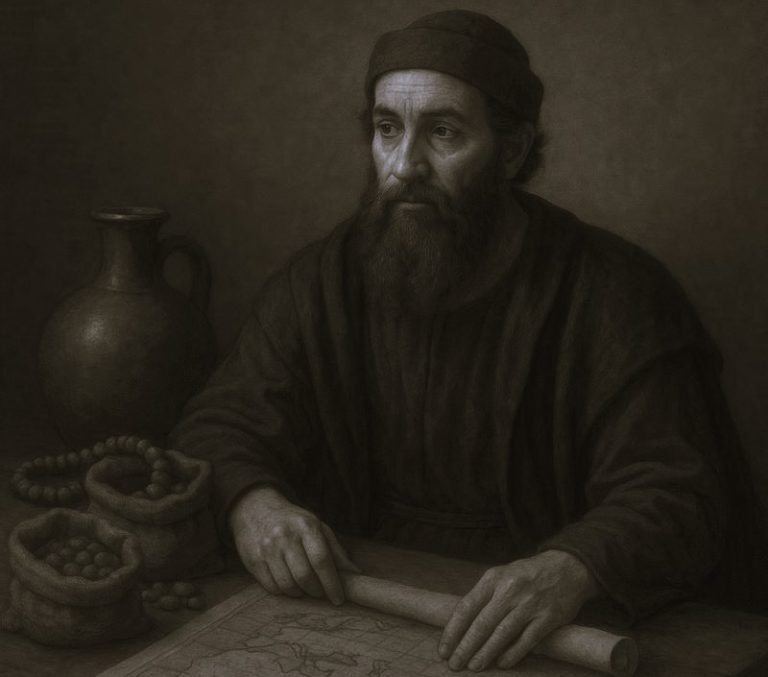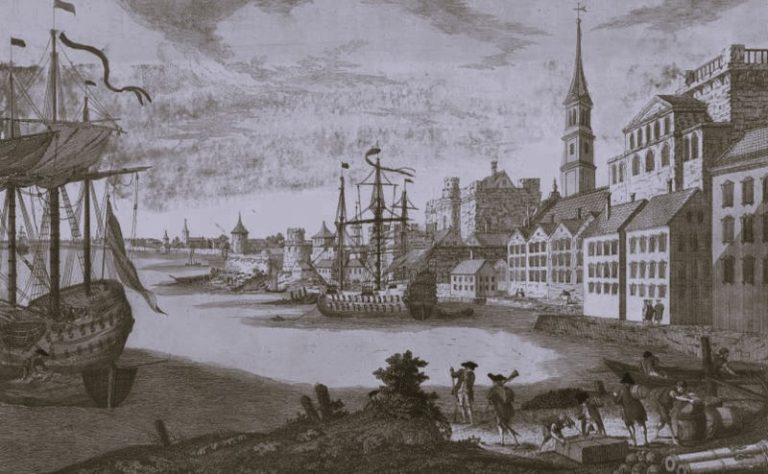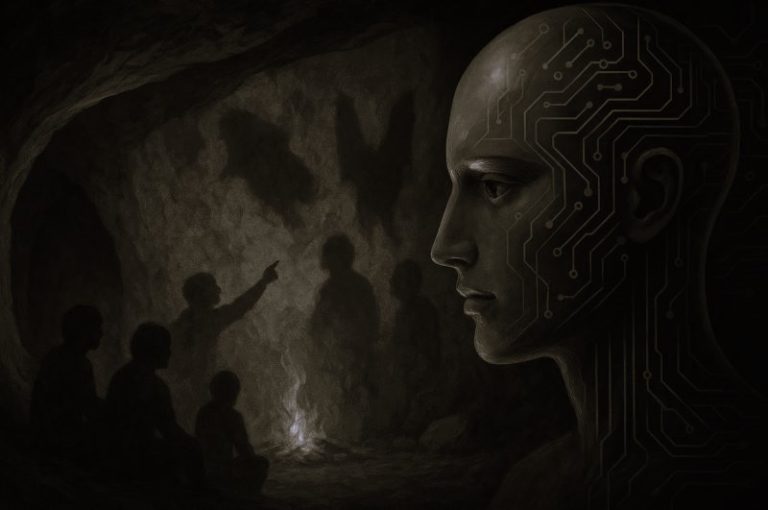

The revolutionaries were actually behind the curve.

By Dr. Neil Faulkner
Late Research Fellow
University of Bristol
The First Day: 23 February
No-one expected it. Lenin, in exile in Zurich, told a meeting of young socialists a month beforehand that ‘We of the older generation may not live to see the decisive battles of this coming revolution.’1 No-one planned it or called for it. ‘Not one party was prepared for the great overturn’, wrote the Menshevik Sukhanov. ‘The Revolution was a great and joyous surprise for us’, reported the Social-Revolutionary Zenzinov. ‘No-one thought of such an imminent possibility of revolution’, recalled the Bolshevik Kayurov.2 The day – International Women’s Day – was to be marked only by meetings, speeches, and leaflets. Even the Vyborg Committee of the Bolshevik Party in the heart of proletarian Petrograd opposed the call for strikes. The danger of a clash with the police, and a bloody defeat, was too great.3
The revolutionaries were behind the curve. They had missed the meaning of the 9th of January. On the anniversary of 1905’s Bloody Sunday massacre, 150,000 workers from a hundred factories had come onto the streets of the capital. It had turned into a massive protest against war, inflation, and low wages. The Petrograd demonstration was mirrored elsewhere: 30,000 out in Moscow, 14,000 in the Baku oil fields, 10,000 in Kharkov in the Ukraine. The one-day protest had then turned into a strike wave, rolling on for weeks, gaining momentum. By the end of January, a quarter of a million workers had taken action, the simple demand for bread mixing with political demands for an end to the war, the overthrow of the government, a second revolution.4

But strikes sap the fighting power of the workers. The weapon had to be kept sharp. So no strikes had been called when the 23rd of February dawned. The bread lines had already formed, many working women up since three, standing grim-faced in the bitter cold. It could take four hours to secure two rolls. Or it might take four hours to secure nothing as the ‘No More Bread’ sign was posted. Then 12 hours in the mill or the metal-bashing shop.
The working women of Petrograd were doubly oppressed: ground down in the workplace by wretched conditions, long hours, and low pay; ground down at home by the toil and poverty of everyday existence. Many were on their own, their brothers, husbands, and sons conscripted. Many were grey with hunger and exhaustion. Sometimes they would go two or three days without eating. Sometimes they would cross themselves and weep with joy when they managed to buy bread.5 When a loaf can induce tears, revolution is close.
It began in these lowest depths of proletarian Russia. Seven thousand low-paid women workers of the Vyborg District’s textile mills came onto the streets demanding ‘Bread’. They marched to neighbouring factories and called them out. By ten o’clock, 20,000 were on strike. By noon, 50,000. That afternoon, the numbers swelled further as men from the engineering factories joined them. Before the day was out, 90,000 were involved, and crowds of women and teenagers were smashing open the food shops in two districts of the city.6
What did it mean? No-one could be sure. Less than a quarter of the city’s workers had taken part, and the action had been confined to the northern Vyborg and Petrograd Districts. In particular, the male engineering workers at the Putilov factory, 40,000 strong, the largest and most militant workforce in Russia, had not gone onto the streets. There had been no clashes, no casualties.
The authorities were well prepared should matters escalate. Under the overall authority of the Minister of the Interior, Alexander Protopopov, the city was divided into six police districts. Three lines of defence had been set up to deal with unrest: police, Cossacks, and the soldiers of the military garrison. The police were armed paramilitaries, most on foot, some mounted. The Cossacks – traditional Tsarist cavalry recruited from the minor gentry and rich peasants of the southern prairies – were armed with whips, sabres, pistols, and carbines. All told, there were 12,000 police and Cossacks. But if these failed, there were no less than 150,000 soldiers stationed in the city.7
Neither the revolutionaries nor the authorities rated the events of 23 February much different from many others over the preceding six weeks. The former still issued no calls to action. The latter took only limited security measures. Extra flour was sent to some of the large bakeries. Troops were deployed to guard key points across the city. Whips were issued to the Cossacks. That was all. Most would probably have agreed with Zinaida Gippius, the avant-garde poet and hostess, who considered the day’s events just an ‘ordinary sort of hunger riot’.8 No-one had yet grasped the inner meaning of Women’s Day 1917.
The Second Day: 24 February

The following morning, central Petrograd was calm. The authorities relaxed. But too soon. Though the call had not come from their leaders, grassroots activists had been at work through the night, agitating for strike action and mass demonstrations on the morrow. ‘We must go ahead and solve our problem by force’, one of them proclaimed at an early morning mass meeting of metal-workers at the Stetinin Factory. ‘Only in this way will we be able to get bread for ourselves … Arm yourselves with everything possible: bolts, screws, rocks. Start smashing the first shops you find!’
Before nine o’clock that morning, 40,000 Vyborg workers attempting to march into the city centre were confronting 500 police and Cossacks at the Aleksandrovsky Bridge. Across four city districts, tens of thousands were on the move, bringing the total on strike to double the number of the first day. The Nevsky Prospect, the main downtown thoroughfare of elite Russia, was choked with demonstrators who had flooded in from the proletarian suburbs. As well as the slogan ‘Bread!’, others could now be heard: ‘Down with the autocracy!’, ‘Down with the war!’ At the bridge, on the Nevsky, and at a dozen other places, there were clashes with the police. Again and again, the ‘Pharaohs’ – as they were known – launched ferocious charges to break up groups of workers. Sometimes the groups scattered and reformed elsewhere; sometimes they held their ground with volleys of cobblestones and lumps of ice.
The police never go over to the crowd. They are recruited from the most backward section of the working class. Their role is to defend the property and power of the rich against threats from below. Their daily work is a matter of hostile collisions with activists, workers, and the poor. Their hatred of the oppressed is reinforced by what is nowadays called ‘canteen culture’. So they become a hardened reactionary caste, immunised against any appeal for solidarity by a psychic armour of indifference and prejudice. In revolution, the police cannot be won over; they have to be physically confronted and routed.9
What, though, of the Cossacks? Though conservative property-owners, and often detailed to internal security, they were first and foremost soldiers. Their demeanour was different from usual – there was not the sneering, the pent-up aggression, the smouldering threat of violence. Sometimes there were even smiles and winks. More. A policeman struck a woman with a knout. A Cossack chased him off. Or so went the rumour passed along in the crowds. On the Aleksandrovsky Bridge, the Cossack line did not give way, but it proved permeable. Some crossed on the Neva ice; and were not stopped. Others darted beneath the Cossacks’ horses; and they were not stopped either. The workers at the Erikson factory held a meeting, voted to strike, and came out 2,500-strong onto the Sampsonievsky Prospect. In a narrow place they met the Cossacks. But when ordered to charge, the Cossacks formed files behind their officers and passed peacefully through the crowd. The drama was enacted several times, always with the same outcome. ‘Of discipline,’ Trotsky later commented,
there remained but a thin transparent shell that threatened to break through any second. The officers hastened to separate their patrol from the workers, and, abandoning the idea of dispersing them, lined the Cossacks across the street as a barrier to prevent the demonstrators from getting to the centre. But even this did not help: standing stock-still in perfect discipline, the Cossacks did not hinder the workers from diving under their horses. The revolution does not choose its paths: it made its first steps toward victory under the belly of a Cossack’s horse.10
Uncertainty remained about what these two days of turmoil portended. ‘Nothing serious’ in the view of British Ambassador George Buchanan, reporting to the Foreign Minister in London.11 Though 28 policemen were reported beaten up (the workers injured went unrecorded), no firearms had been used and no-one had been killed.12 Perhaps matters would yet pass over without a major clash?
Nonetheless, General Sergei Khabalov, head of security in the capital, ordered further precautionary measures. Known revolutionaries were to be rounded up. The Guards Reserve Cavalry was summoned to the capital. More soldiers were to be deployed to back up the police and the Cossacks. But should firearms be used? A critical question that could not be answered. Would what Napoleon once called ‘a whiff of grapeshot’ clear the streets? Or would shooting detonate an explosion in the volatile mass of proletarian Petrograd? No-one could tell. Certainly not Interior Minister Protopopov, who, it is recorded, spent the evening trying to contact Rasputin’s ghost.13
The Third Day: 25 February

Early on the third day it was clear that the strike was spreading and becoming general. Many smaller factories were now closed. Shops were shuttered, trams at a standstill, newspapers no longer available. University and high-school students had joined the movement. The police estimated 240,000 on strike, a third more than on the previous day. The Putilov men – a 40,000-strong proletarian phalanx – now joined the movement. Locked out of the factory in a labour dispute, they stormed the gates, held a mass meeting, and formed a ‘provisional revolutionary committee’ to ‘lead the struggle against the police, to organise fighting detachments, and to establish revolution in the streets’.14
By midday, tens of thousands had gathered near the Kazan Cathedral on the Nevsky Prospect. The workers had padded their backs and shoulders with rags, towels, and bits of blanket as protection against whips. They carried knives, metal spikes, and broken bottles as weapons. Impromptu street meetings were taking place in different places. What followed was chaotic. According to Trotsky:
The mounted police open fire. A speaker falls wounded. Shots from the crowd kill a police inspector and wound the chief of police and several other policemen. Bottles, petards, and hand-grenades are thrown at the gendarmes. The war has taught this art. The soldiers show indifference, at times hostility, to the police. It spread excitedly through the crowd that when the police opened fire by the Alexander III monument, the Cossacks let go a volley at the horse Pharaohs … and the latter had to gallop off.
Elsewhere, a group of strikers led by the worker-Bolshevik Kayurov took off their caps and approached a line of Cossacks, appealing for solidarity in the struggle against the Pharaohs for the right to eat.
‘The Cossacks glanced at each other in a special way,’ Kayurov continued, ‘and we were hardly out of the way before they rushed into the fight.’ And a few minutes later, near the station gate, the crowd were tossing in their arms a Cossack who before their eyes had slaughtered a police inspector with his sabre.15
Then the soldiers appeared, a line of grey greatcoats tramping forwards, faces glowering beneath fur hats, rifles levelled, bayonets fixed, a wall of state power. But the wall was crumbling. The workers approached them, getting close, posing questions. Why have you come? Who is your enemy? Which side are you on? Where do your interests lie?
The soldiers are sullen. A worm is gnawing them, and they cannot stand it when a question hits the very centre of the pain.
On one side were the sons of peasants in uniform; on the other, the sons of peasants in workers’ blouses. And not just men. There were many women in the crowds. Women who were mothers, sisters, wives, and girlfriends of the soldiers. Or perhaps just other women who reminded the soldiers of their families. To shoot Germans who were shooting back had been bad enough, for these had been men with whom they had no quarrel, conscripted to fight as they were, taking the same shit from officers. Now those same officers wanted them to shoot down starving women on the streets of Petrograd. These women were in front of them now, taking hold of their rifles, speaking eye-to-eye. ‘Put down your bayonets! Join us!’ they implored.
The soldiers are excited, ashamed, exchange anxious glances, waver; someone makes up his mind first, and the bayonets rise guiltily above the shoulders of the advancing crowd. The barrier is opened, a joyous and grateful ‘Hurrah!’ shakes the air. The soldiers are surrounded. Everywhere, arguments, reproaches, appeals. The revolution makes another forward step.16

On this day, the third of the uprising, the police had been defeated. The crowd had fought back against their violence, the Cossacks had attacked them, the soldiers failed to support them. In the Vyborg, the police stations had been wrecked, some officers lay dead, the rest had fled. But the matter remained in the balance. The Cossacks and the soldiers were wavering – allowing crowds to assemble and pass, even protecting them from the police – but not a single unit had yet gone over to the uprising. It was not yet a revolution. And, as Trotsky put it, ‘the fate of every revolution at a certain point is decided by a break in the disposition of the army. Against a numerous, disciplined, well-armed, and ably led military force, unarmed or almost unarmed masses of the people cannot possibly gain a victory.’17
The core of the capitalist state is formed of bodies of armed men and women. You could strip away everything else except for soldiers, police, and prisons, and you would still have the state. Everything else is optional, but a minority ruling class cannot rule without armed force. They need this both to defend their property and profits from radical movements at home, and to defend their empires and ‘national interests’ abroad. The Tsarist state of February 1917 was no different in this respect than any of Europe’s other warring states. But its historical peculiarities – the fact that the Tsarist state was more autocratic and thuggish than, say, the British or the French; a fact rooted in the medieval backwardness of Old Russia – meant that it was now cracking apart. What gnawed most deeply in the mind of the soldiers was the crude brutality of the Tsar’s army, the bloody mash of a hopeless war, and the age-old agony of villages crippled by rent, debt, and land-hunger.
‘The psychological moment when the soldiers go over to the revolution is prepared by a long molecular process, which, like other processes of nature, has its point of climax’ (Trotsky). But at that point, the workers must push forwards with confidence to convince the soldiers that they can win. For a soldier to mutiny, especially in time of war, is more perilous than for a worker to strike. To disobey officers, to refuse to fire, to break ranks, to join the crowd: to do these awesome things – to suddenly and completely burst the iron bands of military discipline – the soldier must be certain that he will become part of a victorious mass able to protect him.18 The next two days would decide.
The Fourth Day: 26 February

It was a Sunday, not a working day, so the people rose late. Petrograd was quiet that morning. ‘The city is calm’, the Tsarina cabled the Tsar. ‘Today, 26 February, the city is entirely peaceful’, reported General Khabalov.19
The city centre was under military occupation. Overnight, the Tsar had telegraphed new instructions to Khabalov:
I ORDER YOU TO BRING ALL OF THESE DISORDERS IN THE CAPITAL TO A HALT AS OF TOMORROW. THESE CANNOT BE PERMITTED IN THIS DIFFICULT TIME OF WAR WITH GERMANY AND AUSTRIA. NICHOLAS.
Khabalov had passed these orders to his subordinates, Petrograd’s district police and army chiefs, and they had made their dispositions. The downtown area had been turned into a military camp. Infantry detachments garrisoned key government buildings. Armoured cars were parked at strategic points. Machine-guns had been placed to sweep major intersections. Cossack squadrons were held in readiness to clear the streets. ‘If the crowd is small,’ Khabalov had told his officers, ‘if it is not at all aggressive, and if it is not carrying [red] banners, then use your cavalry detachments to disperse it. But if the crowd is in any way threatening, and if it carries banners, then you are to act according to regulations. Give three warnings, and then open fire.’20
The workers had been massing in the proletarian suburbs since dawn, but it was late morning before the first processions approached the lines of soldiers covering the roads and bridges into the city centre. Wherever marchers ignored orders to halt, officers gave the order to fire.
Shooting erupted in different parts of the city, and the workers scattered into doorways, courtyards, side-streets. Brown humps were left on the road, streaked with red. Machine-guns opened up. The Cossacks moved down the streets.
The workers could not defend themselves: they had come to the demonstration unarmed. Shlyapnikov, one of only three members of the top Bolshevik leadership in the city, had firmly opposed the demand that the workers should arm. The workers could not defeat the soldiers with guns. They had to win with arguments. Only thus might the insurrection be victorious: ‘I decisively refused to search for arms at all and demanded that the soldiers should be drawn into the uprising, so as to get arms for all the workers. This was more difficult than to get a few dozen revolvers. But in this was the whole programme of action.’21
But now the soldiers were shooting, and, as one of them recalled, ‘the blood of workers stained the snow’.22 Shlyapnikov’s strategy appeared to some a failure. Revolution takes place in a fog of uncertainty. Each protagonist sees only a small part of the whole; each attempts to fill out the picture with impressions, rumours, fragments of reports, the random assessments and opinions of others. What few could see at first was that the killing – which was intended to render the embryonic revolution abortive – was in fact the psychic trauma that finally shattered the brittle allegiance of the soldiers.

The regime had chosen to militarise the crisis. It was attempting to restore order through terror: by turning Russian soldiers against Russian workers. But this was a gamble. The state is an apparatus of power based on social relationships. A combination of coercion and consent – force and fraud – it depends for its integrity, on the one hand, on the quiescence of the majority, and on the other, on the loyalty of the personnel of its repressive agencies. By 26 February 1917, the Tsarist state had lost the former: the proletarian crowds were now openly revolutionary, demanding an end to the war and the autocracy, and, even in the face of machine-guns, were standing their ground and spitting defiance. And the signs were there that the size, confidence, and appeals of those crowds were acting like an acid on the threads of discipline binding soldiers to officers in the grey lines opposite.
Many soldiers were firing high. Some were not firing at all. ‘Each man must fire in turn so that I can watch him shoot’, yelled an enraged officer. ‘Aim at the heart!’23 In many parts of the city, the revolutionaries in the crowds, the rank-and-file leaders, sensed the wavering in the ranks. Sometimes it was obvious to all. The Menshevik Nikolai Sukhanov witnessed an encounter on the Trinity Bridge. A cordon of Grenadiers was standing shoulder-to-shoulder barring the way. Activists were directing speeches at them. The soldiers were listening, some solemn and attentive, others chuckling. The workers were very close, and though the soldiers generally prevented anyone passing, a few filtered through and were not turned back.
There was no direct insubordination, but they were obviously unsuitable material for any active operations, and there was clearly nothing for the officers to do but turn a blind eye on this scene of ‘corruption’. For this detachment to take aim and open fire on the people it had been conversing with was unthinkable, and no-one in the crowd believed for a moment that it was possible.24
This was confirmed by an unequivocal event that evening. Accounts of it vary, but what seems to have happened is this. Someone got news to the fourth company of the Pavlovsky Regiment – which had been confined to barracks without access to newspapers, telephones, or visitors – that its three sister companies were firing on the people. By six o’clock a decision had been made, and 150 men of the fourth company went onto the streets without orders, commanded by an NCO (his name lost to history). Their aim, it seems, was to recall their comrades. On the way, they encountered a police detachment. Either it was barring their way or it was shooting on unarmed demonstrators – or both – and the Pavlovsky men opened fire on the police, killing one, wounding another. Further details of their journey are obscure, but when they returned to barracks, they were surrounded by the Preobrazhensky Regiment, shots were exchanged, and the rebels were forced to surrender. Thirty-five were arrested and locked up. Another 22, however, had absconded – with their rifles.
Sukhanov heard an eyewitness account of these portentous events at the house of writer Maxim Gorky, a regular meeting-place of the city’s radical intelligentsia. ‘This’, reported Sukhanov,
was the first instance of a massive open clash between armed detachments … the importance of this affair … was enormous and quite unmistakable … to the Pavlovsky Regiment belongs the honour of having performed the first revolutionary act of the military against the armed forces of Tsarism … This was a terrible breach in the stronghold of Tsarism.25
The Fifth Day: 27 February

Much had happened in the night. Soldiers had discussed the day’s events in a hundred heated exchanges in the barracks. Many were sickened by what they had done, and embittered against the officers who had ordered it. Many had reached a firm decision: they would not fire on the crowds again.
The military mutiny began at seven o’clock. The previous day, the men of the Volynsky Regiment’s training squad had opened up with rifles and machine-guns in Znamenskaya Square, killing 40, wounding as many. The psychic injury was deep. Now there was atonement. ‘Fathers, mothers, sisters, brothers, even brides, are begging for bread’, Sergeant Kirpichnikov told his comrades. ‘Should we strike them down? Have you seen the blood running in the streets? I propose that we do not march against them tomorrow … Enough blood has been shed. Now it is time to die for freedom.’26
When Captain Lashkevitch arrived to lead out his detachment, he was met with cries of ‘We will not shoot’. The whole regiment refused to move. Their officers fled. Shots were fired at them from the windows as they went. The barracks had been taken for the revolution.
But could it be held? Soon the Volynsky were rushing to the neighbouring barracks – of the Litovsky, the Preobrazhensky, the Lithuanian Guards, the 6th Military Engineers – calling out their fellow soldiers just as the working women had called out their fellow workers on the first day.
Separate movements were under way in other parts of the city. Inner struggle convulsed the Moscow Regiment. Some officers and the training battalion tried to bar the way from Vyborg to the city centre, but other soldiers of the regiment joined the workers in a brief exchange of fire. Soon the whole regiment simply dissolved into the crowd, the soldiers helping to hunt down the police, break into the arsenals, and find arms for the workers.
By early afternoon, the insurgents had taken 40,000 rifles, 30,000 revolvers, and 400 machine-guns. Armoured cars had appeared flying red flags. The fortresses had been opened and political prisoners released. Resistance at the barracks of the army bicyclists on the Sampsonievsky had been overwhelmed by the fire of armoured cars and machine-guns; a fence was broken down, buildings set on fire, the commanding officer killed, and other officers either captured or forced to flee through some vegetable gardens.
Late in the day came news that the Semenovsky Regiment – which had shot down the workers on Bloody Sunday in 1905 – had joined the revolution. They in turn called out the Izmailovsky.27
Successive attempts throughout the day to form loyalist detachments with which to confront the mutineers and the workers failed. Khabalov had dispatched a regiment of a thousand men under a resolute officer with orders to suppress the uprising by whatever means were necessary. The regiment simply disappeared and was never heard from again. Entire military formations were dissolving. The once rock-solid human material of the Tsarist state had turned into a social fluid that seeped away in all directions. Thus, as Trotsky observed, ‘The Tsarist garrison of the capital, numbering 150,000 soldiers, was dwindling, melting, disappearing. By night, it no longer existed.’ Khabalov cabled the Tsar at army headquarters:
I beg to inform His Imperial Highness that I am not able to carry out his instructions about the restoration of order in the capital. The majority of army units, one after the other, have betrayed their oaths, refusing to fire upon the rebels. Other units have joined the insurgents and have turned their weapons against the troops still remaining loyal to His Highness.28
The triumph of the revolution in the Tsarist capital was complete by nightfall on 27 February. The strike was now general across the city and involved virtually the entire proletariat of 400,000 workers. The mutiny was equally general: it is estimated that somewhere between 15 and 45 per cent of the soldiers were on the streets with the workers, and virtually all the rest were in their barracks refusing orders to take repressive action.29
But Petrograd was a city of two million in a country of 150 million. What of the rest of Russia?
There are circumstances in which a revolutionary city advances too far ahead of the country of which it is part and is then isolated and crushed. It happened with Paris in 1848 and 1871. It would – as we shall see – be a danger narrowly averted in Petrograd itself in July 1917, and a danger terribly realised in Berlin in 1919. Progress in politics is impossible without a vanguard. But a vanguard must be one step ahead, not three.

Not that anyone would have been to blame had Petrograd moved too far ahead in February 1917. It was both the politico-military and the proletarian centre of Russia: at once the administrative core of the Tsarist state and the front line of the anti-Tsarist class struggle. Here, in the ancient capital, the contradictions of Old Russia attained their most concentrated form, accumulating a most powerful explosive charge. The danger of a premature detonation was there. But the elemental social forces unleashed in the February Days could not be held back. No-one summoned them. Many of the revolutionary leaders – Mensheviks, Social-Revolutionaries, and especially Bolsheviks – were abroad. Second-rank figures filled the gaps. But no call to the streets had come from any of them.
One rank-and-file Bolshevik reported: ‘Absolutely no guiding initiative from the party centres was felt … the Petrograd Committee had been arrested and the representative of the Central Committee, Comrade Shlyapnikov, was unable to give any directives for the coming day.’30 This is confirmed by the testimony of the Okhrana, the Tsarist secret police, whose files were seized after the revolution. An undercover agent inside the Bolshevik Party send this report to his superiors on 26 February:
The movement which has started has flared up without any party preparing it and without any preliminary discussion of a plan of action. The revolutionary circles began to react only toward the end of the second day when the desire to develop the success of the movement to the widest limits possible became noticeable … The general attitude of the non-party masses is as follows: the movement started spontaneously, without any preparation, exclusively on the basis of the food crisis.31
This does not mean there was no leadership: it means that the leadership was from below. All mass action has to be organised. No meeting, march, or street battle lacks its leaders. Sometimes they had emerged from the ranks, thrown up by the February crisis. But more often it was veterans of the struggle, members of the revolutionary underground, who formed the organisational backbone of the uprising. Most were Bolsheviks. In answer to the question ‘Who led the February revolution?’, Trotsky gave an unequivocal answer: ‘Conscious and tempered workers educated for the most part by the party of Lenin.’32
The spark had caused a conflagration. But would Russia catch fire? The issue was only briefly in the balance. Strikes and demonstrations began in Moscow on 27 February. That very afternoon, detachments of soldiers arrived at the City Duma to enquire how they might join the revolution. Some sporadic shooting occurred over the succeeding few days, but it was nothing to compare with Petrograd’s heavy toll (1,443 killed and wounded).
The revolution in the provincial cities was delayed a little more, beginning only on 1 March; but the story was everywhere the same. The workers left the factories, marched to the city centre, and gathered round the council chamber. The soldiers joined them there. The crowds waved red banners, hailed the revolution, and sang the Marseillaise. Petrograd answered for Russia. The vanguard was but one step ahead.33
What of ‘Bloody’ Nicholas? Having lost control of the garrison of the capital, the Tsar ordered fresh regiments to advance on Petrograd. The requirement was for ‘an absolutely loyal, though not necessarily large force’. The Cavaliers of St George – a battalion of decorated veterans – were detailed for the operation, along with four infantry regiments, four cavalry regiments, two machine-gun units, and four batteries of artillery. As the news from the capital worsened, further units were put on standby. But it proved a shadow army destined never to arrive. Far more dangerous than machine-guns was the moral contagion flowing in all directions from Red Petrograd. General Alexeyev resolved to keep his soldiers out of range. The necessity now was for a political move, not a military one, lest the army as a whole be lost.
Of this, though, the imbecilic head of the dynasty was incapable. Instead, he abandoned his headquarters, his generals, and his front-line army, intent on returning to his family at Tsarskoe Selo Palace on the edge of Petrograd. He never reached it. The Tsar’s train was diverted by railway workers and, having shunted aimlessly across the countryside for two days, finally came to rest at Pskov.34 The Tsar of All Russia could no longer even accomplish a train journey. Thus was the 300-year-old Romanov dynasty terminated in a railway siding.35
See endnotes and bibliography at source.
Chapter 5 (111-132) from A People’s History of the Russian Revolution, by Neil Faulkner (Pluto Press, 03.15.2017), published by OAPEN under the terms of a Creative Commons Attribution-NonCommercial-NoDerivatives 4.0 International license.






